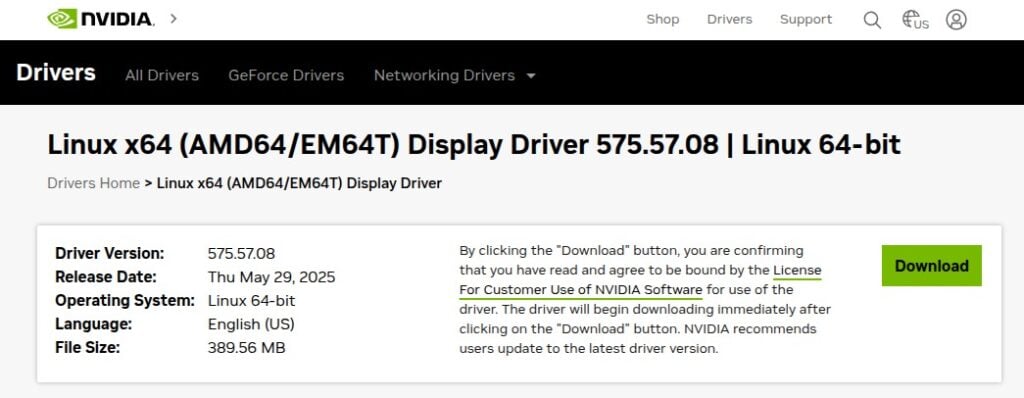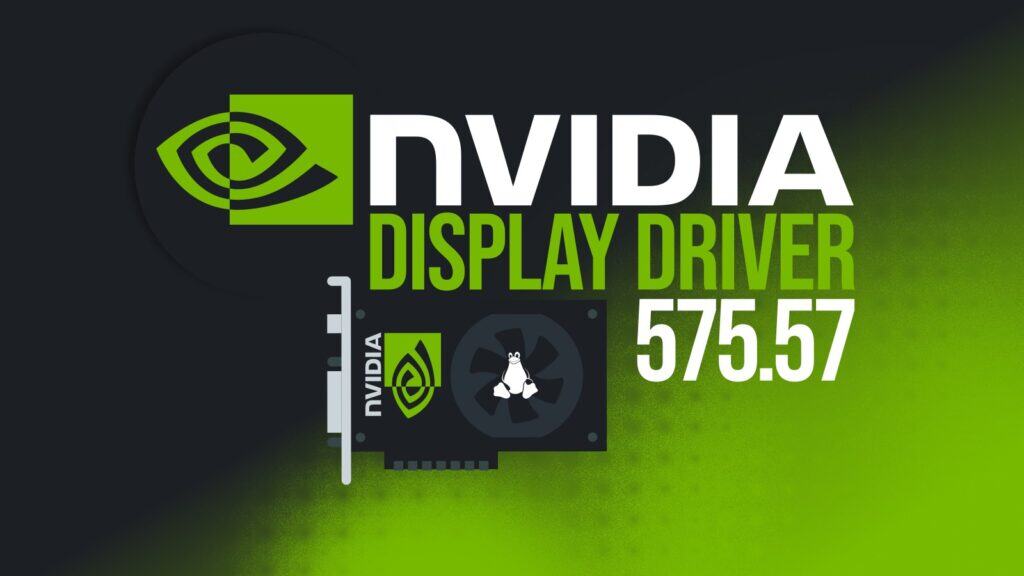After debuting in beta back in mid-April, today, NVIDIA has rolled out its newest stable Linux display driver update, version 575.57. It is already available for download and is recommended for users seeking the latest improvements for their graphics hardware.
The headline fix addresses a curious memory leak that would steadily cause X11-based OpenGL and Vulkan applications to consume more RAM after each suspend-resume cycle.
At the same time, those running NVIDIA’s PRIME Display Offload in “Reverse PRIME” mode—where frames are rendered on the discrete GPU and then displayed by the integrated one—should find that inexplicable stalls or black screens with certain OpenGL compositors have finally been banished.
Beyond these core fixes, this beta release embraces broader API flexibility. Notably, the “__NV_DISABLE_EXPLICIT_SYNC” environment variable, previously limited to EGL applications, now extends its influence to GLX and Vulkan, giving developers and power users a single switch to toggle explicit synchronization across all major graphics interfaces.

For Gamers, both Marvel Rivals, which could crash at startup or during level loads, and Minecraft running under Xwayland have seen their stability woes addressed. Meanwhile, applications leveraging the “VK_KHR_present_wait” extension on Wayland will no longer hang mid-frame, and GLX front-buffer rendering under Xwayland is now supported.
Regarding multi-GPU setups, PRIME Render Offload has been tidied up to work flawlessly even when the same NVIDIA GPU serves as both the render source and sink, eliminating past misconfigurations that could entirely block offloading.
At the display layer, users who manually override EDID data via the “/sys/kernel/debug/dri/*/edid_override” interface will find VRR fully restored, and two new DRM plane properties—”COLOR_ENCODING” and “COLOR_RANGE“—offer finer control over color fidelity and format negotiation.
Notebook users running on battery will appreciate that the Total Graphics Power (TGP) metrics—both default and maximum—are once again visible in the NVIDIA Settings panel. Moreover, the nvidia-powerd daemon now brings Dynamic Boost to battery-powered sessions, intelligently balancing performance and endurance when you’re away from the wall outlet.
Under the hood, a fresh “conceal_vrr_caps” parameter for the nvidia-modeset kernel module lets you enable features on displays (like Ultra Low Motion Blur) that might conflict with VRR, while trailing whitespace in GPU product names passed to audio devices has been stripped out to prevent EDID mismatches.
Finally, NVIDIA has cleaned house by dropping support for several legacy DRM plane properties on kernels older than 6.8, to avoid hitting the DRM object property limit, and has shipped its new Smooth Motion frame-interpolation feature on Linux. Plus, a nasty crash affecting render-offloaded applications built with KDE Frameworks 6 has finally been resolved.
For a complete list of changes and downloads, visit the release notes.
